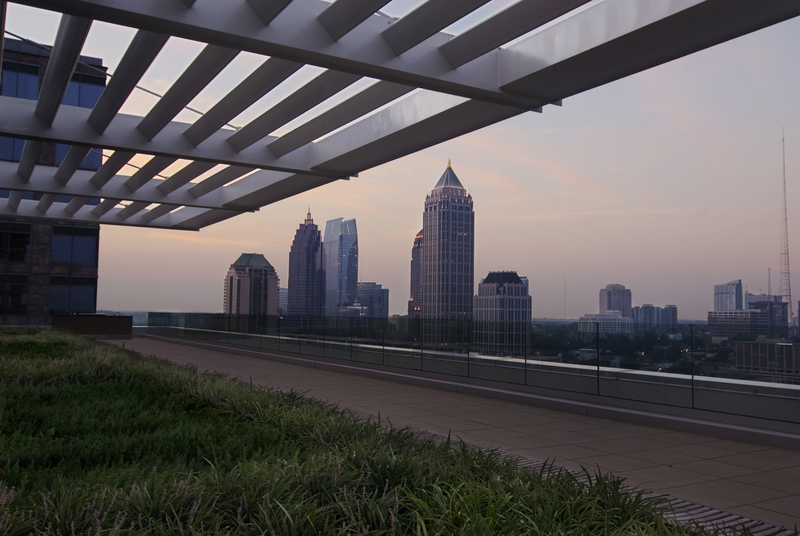Code Green Solutions


Optimism for climate action ruled at two recent events – the American Climate Leadership Summit and Climate Week in NYC. These notable gatherings reflect the increased momentum supporting successful implementation of the landmark Paris Agreement, which aims to limit the global temperature rise to 1.5 degrees. In honor of World Green Building week, this article focuses on the role of green buildings as a climate solution.
Buildings have long been determined as a critically important and low cost sector for achieving significant greenhouse gas reductions. McKinsey (2009), the Intergovernmental Panel on Climate Change (IPCC), and the International Energy Agency (IEA) have all identified building energy efficiency as a low-cost or least-cost solution achievable with existing technology, and IEA estimated the sector’s potential for avoiding roughly 40 percent of current global fossil carbon dioxide emissions. Layer onto efficiency the opportunities for renewable energy, and buildings are a natural focus for climate mitigation efforts.
Energy efficiency and on-site renewable energy production are vital – and big pieces of the puzzle in combatting climate change. But we can’t stop there; let’s make sure we are leveraging our buildings as integrated systems optimized for climate mitigation and resilience. Especially with the investment challenge posed by the stockpile of existing buildings not yet updated, we need to reach higher with every project we touch, new or existing, to have the regenerative impact we need.
High-performing green buildings, in particular LEED-certified buildings, provide the means to reduce with maximum effect the climate impacts of buildings and their inhabitants. When all of you, our green building community, were engaged in developing LEED v4, reducing buildings’ contribution to climate change was prioritized. This beneficial impact is directly advanced by fully 38% of LEED v4 credits.
At the core lies the full suite of Energy & Atmosphere (EA) credits, aimed at delivering efficiently operating buildings but also promoting refrigerant management to advance climate-friendly alternatives to hydrofluorocarbons HFC as well as to reduce leaks.
In related news, the White House announced last week that 100 nations have come together to call for an ambitious and early freeze date for the use of HFCs. HFCs were developed as an ozone-layer preserving alternative to historical refrigerants, but are now known to be highly potent greenhouse gases – hundreds or thousands more so than carbon dioxide.
The EA category pushes project teams to integrate with the grid in ways that help reduce energy climate impact as well, via demand response and renewable energy; as well as incorporating the use of grid-source, renewable energy technologies and carbon mitigation projects. And through a pilot credit, teams can use GHG emissions or source energy, among several alternative metrics to cost for deriving the building’s energy performance.
Some of the other strategies by which green building supports the climate may be less obvious. Intentionally, LEED encourages buildings to be designed and built in consideration of lifecycle carbon impacts. And, LEED’s integrative approach results in features that can actively influence inhabitants in ways that support the climate. Green buildings create the opportunity for easier – and more – composting and reduced waste – thus reducing waste-hauling and potentially landfill methane production. Strategies in LEED – as well as SITES — encourage retention and creation of natural vegetated land areas and roofs and other green infrastructure to mimic the benefits of natural water systems. Given that plants and trees consume carbon dioxide, building features and strategies incorporating outside vegetation inherently help the climate (see NASA’s explanation).
For more on green infrastructure, see the excellent article series by our Schneider Fellow Hannah Jane Brown.
LEED also rewards thoughtful decisions about building location, with credits that encourage compact development and connection with transit and amenities, that all serve to reduce building and inhabitant carbon impact. Green buildings enable alternative transportation and direct inhabitants to non-energy-using alternatives. Providing inhabitant feedback with systems like the LEED Dynamic Plaque, which showcases a building’s environmental efforts and performance, can drive further reductions.
Taken altogether, these strategies can significantly reduce the GHG footprint of buildings, leveraging improvement beyond energy efficiency alone.
For example, a 2014 academic study found LEED EBOM-certified buildings offer greater benefit to the climate than energy efficiency credits alone. Compared to conventional construction, the buildings used 50 percent less greenhouse gases due to water consumption; 48 percent less greenhouse gases due to solid waste; and 5 percent less greenhouse gases due to transportation.
For those looking to make a tangible impact on climate change, green building stands out as an actionable approach, with a range of energy-focused and additional, important strategies that are needed for buildings to meet their potential as a core solution to the climate crisis. As governments, investors, and private sector parties adjust their climate action plans and related policy and regulatory initiatives, we at USGBC are expanding our tools to measure and mark climate performance at multiple scales. Each project is an opportunity to reduce our impact. Make it count!